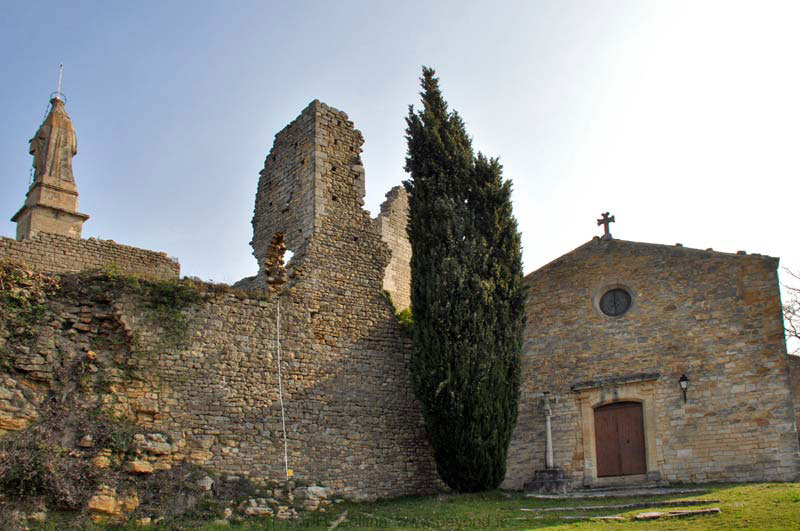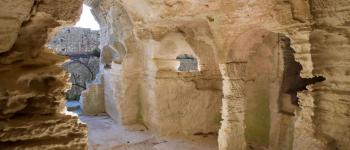
Located in the Gard department, to the west of Bagnols-sur-Céze, the village of Sabran has one particularity: it is made up of eight hamlets (Cadignac, Carmes, Chavanel, Colombier, Combe, Donnat, Mégier and Sabran), with six churches and five cemeteries.
Sheltered by a rocky promontory, Sabran is home to the ruins of a feudal castle, cradle of the prestigious Sabran family, and a monumental statue of the Virgin Mary.
A little history
The history of the Sabran family, with all its branches, stretches from the 10th to the 19th century. An illustrious family in Languedoc, with possession of the seigneury of Uzès and the barony of Sabran, it extended into Provence, where it achieved even greater renown with possession of Forcalquier.
Descendants of Charles Martel, Mathilde and Gueraud d'Auvergne, the couple became the Amic de Sabran and then the Sabran family.
Several centuries and a few descendants later, Raymond Béranger IV (1198-1245) Count of Provence and Forcalquier, son of Garsende de Forcalquier, from the House of Sabran, became father to 4 daughters, future queens, after his union with Beatrix of Savoy:
- Marguerite de Provence,
- Eléonore de Provence,
- Sancie de Provence,
- Béatrix de Provence.
Born in the Château de Saint-Maime, near the villages of Dauphin and Mane (Alpes-de-Haute-Provence), they lived mainly in Provence.
Through Raymond Bérenger's daughters, the Kings of France Louis IX and Sicily Charles I, who were already brothers, became brothers-in-law; King Henry III of England and his brother, the future King of the Romans, Richard of Cornwall, became brothers-in-law. From these four daughters, princesses of Provence, descended most of the royal families that followed in their footsteps.
The virgin couple, Elzéar & Delphine
Sabran also owes its originality to the fact that it was home to Elzéar de Sabran, baron of Ansouis, who married Delphine de Signes in 1299, imposing a virginal marriage.
"A feat which, throughout the first half of the 14th century, plunged Provence into admiring amazement," writes Paul Amargier, who dedicated a study to them.
A member of the Order of St. Francis of Assisi, Elzéar was known for his charity; he visited hospitals, cared for the sick, distributed alms, and neglected no duty towards his vassals.
His wife took part in all his good works, and lived as saintly a life as he did: begging, mass, flagellation and kissing the feet of lepers. Delphine de Sabran's contempt for her body was an obsession, as she once confessed: "I am meat for worms, a receptacle for iniquities and sins".
He died of illness in Paris in 1323; she died in 1360.
Elzéar was canonized by Pope Urban V, his nephew, in 1368, who cited him as a model for Christian knights, emphasizing his generosity towards the poor, his intense mystical life and his unwavering attachment to the Church.
The relics of Elzéar and Delphine are preserved in Ansouis church and Sainte-Anne d'Apt cathedral.
Also worth seeing...
The Chapelle des Templiers, listed as a historic monument, is located on the Boussargues estate and is dedicated to Saint Symphorien.
In Combe, the Chapelle de Saint-Julien de Pistrin (12th century) is currently being restored.
The 12th-century Sabran chapel has been restored.
In all, there are 6 churches in Sabran.
http://www.sabran.fr/atre Reines et son Saint



